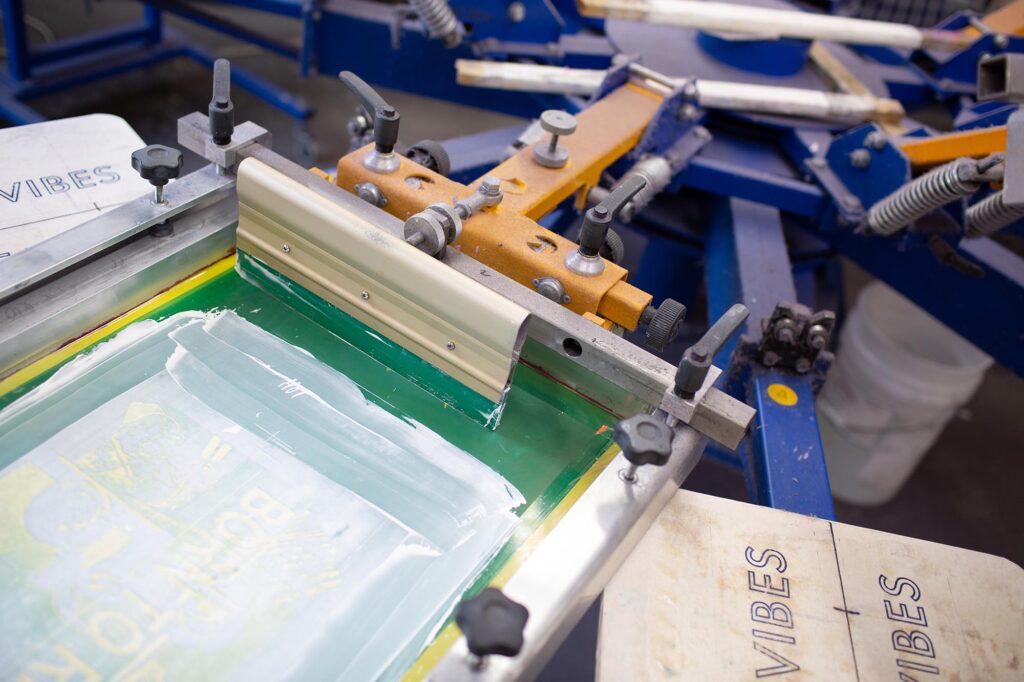In the world of graphic design, creating a logo that looks fantastic on a screen is just the beginning. When it comes to screen printing, especially on eco-friendly bags, a whole new set of considerations come into play. Screen printing, known for its durability and vibrant color reproduction, is a popular choice for branding on reusable and sustainable materials. It requires specific design approaches to ensure that your logo retains its impact in the physical world while also aligning with the eco-friendly ethos of the bags. Let’s delve into the essentials of designing logos for screen printing.
Understanding Screen Printing
Screen printing, or silkscreen printing, involves pressing ink through a mesh stencil onto a surface. This technique works well for creating bold and long-lasting designs on various materials like fabric, paper, and wood. However, it presents specific challenges:
- Ink Thickness: Screen printing uses thick ink, which can affect the level of detail in your design.
- Color Layers: Each color in your design requires a separate screen, making simplicity and color separation crucial.
- Material Texture: The texture of the material can impact the appearance of your design, especially with fabrics.
Key Design Principles for Screen Printing
1. Simplify Your Design
Screen printing excels with simple designs. Intricate details may blur or get lost due to the thickness of the ink and the mesh screen. Focus on bold shapes and clean lines to ensure clarity and impact.
2. Use Solid Colors
Screen printing works best with solid colors. Gradient effects and fine color transitions can be challenging to reproduce accurately. Stick to solid, vibrant colors that can be easily separated into different screens. If you want gradients, use halftones, where dots of varying sizes simulate gradient effects.
3. Limit the Number of Colors
Each color in your design requires a separate screen and a separate pass of ink, increasing production time and cost. Keep your design to a few colors for a more efficient and cost-effective printing process. Aim for a maximum of 4-5 colors.
4. Pay Attention to Color Separation
Color separation is crucial for screen printing. Ensure your design software allows you to separate colors into different layers, each representing a different screen. Organize your file so that each color is on its own layer to avoid confusion during printing.
5. Choose the Right Fonts
For logos with text, choose fonts that are legible and not too thin. Thin fonts or those with intricate details may become indistinguishable when printed. Opt for bold, simple fonts that will stand out in the final product.
6. Consider Print Placement and Size
Think about the placement and size of your logo on the material. Ensure that your design remains clear and readable at the intended size. Be mindful that very small details might get lost or distort during the screen printing process.
7. Prepare High-Quality Files
Submit your design in a high-resolution format. Vector files (such as those in Adobe Illustrator) work best because they scale without losing quality. Ensure all elements are properly aligned and that your design is clean and free of unnecessary details.
Final Steps Before Printing
Before sending your design to print, create a mock-up to visualize how it will look on the actual material. This step helps identify potential issues with color, size, or placement. Consult with your screen printer to ensure your design meets their specific requirements and get their input on any necessary adjustments.
Conclusion
Designing logos for screen printing requires a balance of creativity and technical precision. By simplifying your design, focusing on solid colors, and preparing high-quality files, you can create logos that not only look great on screen but also stand out in the real world. Embrace the unique aspects of screen printing and let your logo shine with bold, vibrant designs that last. Whether you’re designing for apparel, promotional items, or eco-friendly bags, these principles will help ensure your logo is both visually striking and practically effective. Happy designing!



